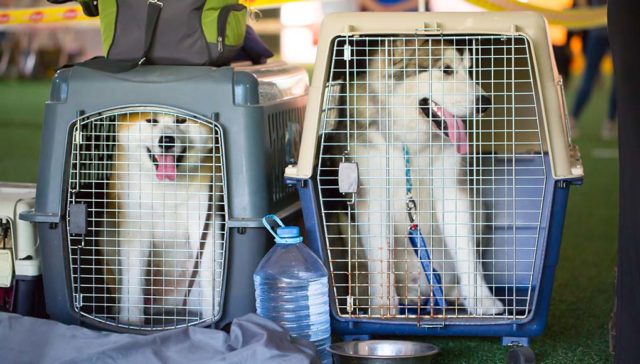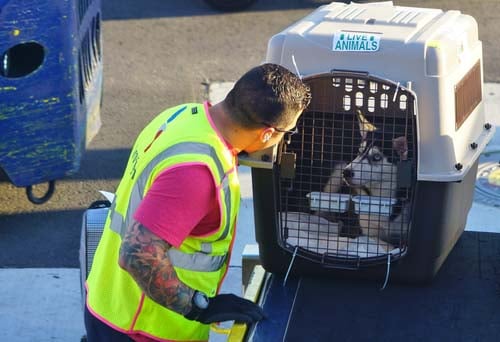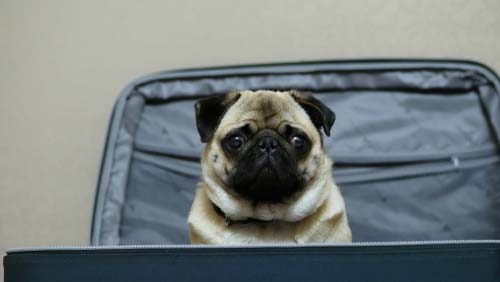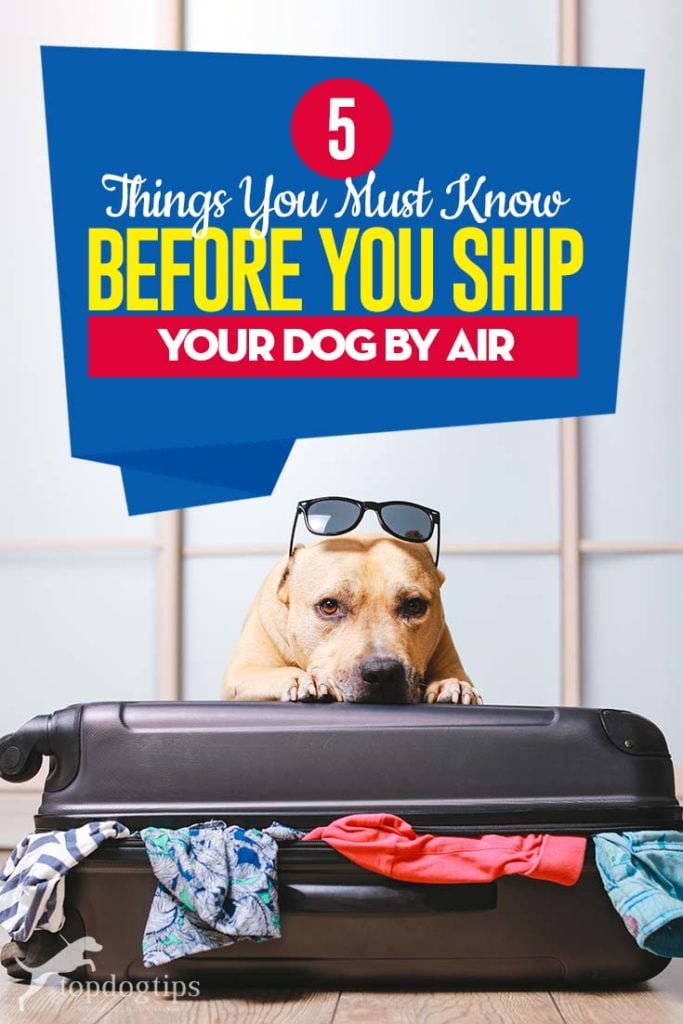
Table of Contents
One of the main concerns for pet owners is whether it is safe to be shipping dogs by air. You may be in a situation where, in order to adopt a dog or a young puppy, the animal must be shipped over to your location from a rescue or breeder. Or, perhaps, you simply want to travel with your pet and need to fly with them. Whatever your story, here are the things to know before shipping a dog by air.
In this article, we will cover:
- How much does it cost to ship a dog by air
- How to choose a suitable pet carrier for air travel
- Is your dog healthy enough for the plane trip?
- Heat stress and dangers for brachycephalic breeds
- How to prepare your dog for the trip by air
Things To Know Before Shipping Dogs By Air
1. How Much Does It Cost to Ship Dogs by Air?
It is generally impossible to offer an exact quote because all dogs and travel situations will greatly vary. However, here is a general breakdown of all standard items to be purchased and costs to be considered as part of the overall expense of shipping dogs by air.
Before you start calculating the costs, double-check air travel regulations for where you travel – this will make the math easier. Also, the figures below will vary depending on your specific situation and other factors. These costs are either average or approximations.
- Vet visits prior to the move ($50)
- Vaccinations for international travel ($50-300)
- The cost of airline-approved crate ($30-40)
- The airfare for your pet ($125)
- Transportation to and from the airport
- Pet health certificate ($25-150)
- USDA health endorsement ($30-200)
- Import permits ($10-350)
- Quarantine fees ($550)
- Customs fees ($250-300)
Note: Some of these are obviously optional and/or depend on a specific situation. For example, you may not need to pay quarantine fees, depending on how and where you travel. If this is a domestic trip, the overall cost will also be lower than for international travel.

2. How to Choose a Suitable Pet Carrier for Air Travel
Not every dog carrier is suitable for air travel. While some airlines are more flexible, others will have strict regulations about traveling with dogs, particularly the crates they're in. Generally, the carrier must comply with the current IATA Live Animal Regulations.
Below is a checklist of the requirements for an airline-approved dog crate.
- Size – Your dog should strictly be able to stand, sit erect, turn around completely, and fully lay down in a natural position.
- Water – Your dog will need access to water. You should ensure that the carrier has a water container inside that can also be accessed from the outside for easy refilling.
- Food – You should check the IATA recommendations for food and food containers for international flights. Your dog won’t need food for a domestic flight.
- Ventilation – There should be adequate ventilation and airflow, but also protection against the weather, including shelter and shade. This will stop your dog from feeling too exposed or stressed due to lack of protection.
- No Mesh – Any container that is made entirely from welded mesh or wire mesh will not be considered suitable for air travel.
The easiest way to simply purchase an already airline-approved carrier for shipping your dog by air. These range from $30 to $50, and you will have a much easier time with the airline's regulations.
Top Rated Airline-Approved Pet Carriers
Here are the carriers that have already been approved by most major airlines.
3. Is Your Dog Healthy Enough for the Trip?
Air travel isn’t suitable for every dog. You will need to establish first whether it is in your dog’s best interests to travel by plane. In the case where a dog is not suitable for air travel (due to health reasons, for example), you will need to look into other modes of transport where the animal can be fully supervised throughout the entire process.
In order for your pet to cope with the stress of the trip, it is important that your dog is in optimal health. They will be confined for an extended period of time. Therefore, they need to be fit and healthy to endure this. If a dog becomes stressed or agitated, they can cause themselves harm or get injured during an unattended flight in a small, confined space.
To minimize the risks, you should always have a thorough health check conducted by your veterinarian specifically for air travel. The vet will check your dog’s overall health and advise you as to whether they're a suitable candidate for air travel. For example, dogs with serious heart problems or who are very nervous and extremely anxious may not be safe traveling alone in a pet carrier.

4. Heat Stress and Brachycephalic Breeds
Pet owners should be aware of the risks that heat stress poses on their animals. When heat generation in the body, caused by stress, exceeds the dog's body's ability to lose heat, the results can be fatal.
Heatstroke may be more of a concern if your dog's breed is heavy double-coated or has breathing problems. Brachycephalic breeds, which are short-faced dogs, are particularly at risk. The structure of these dogs' flat faces can affect their ability to breathe normally; therefore, these breeds will need careful consideration, too.
The carrier you choose for your pet will have an impact on the heat stress your dog experiences while traveling, but you may also want to consider the weather when booking your dates. You may choose to alter them if the plane lands on a particularly hot and humid day. Often, the time of day you fly makes a big difference, but it's something pet owners rarely consider.
5. How to Prepare Your Dog for the Trip
If you are traveling with a family pet, then it should be easy for you to prepare your dog to be shipped by air in a way that they feel comfortable with the process.
Start as early as possible. Ideally, preparations begin one month before traveling. Crate training will be crucial. Leave the travel dog crate that you will be using open and in a busy area of your house, occasionally leaving treats inside to encourage your dog to associate the space with positive experiences.
Once your dog is used to being inside this new crate in a stationary position, you then need to get them accustomed to the experience of being inside of it whilst it is moving. You can simulate what it will be like for your dog in a real situation by wheeling them around in the crate using a trolley or cart or getting them into a car.
Make experiences involving the new airline crate enjoyable so that your pet does not associate the space with stress or fear. Practice driving in your car with your dog inside the crate ahead of time so that they get used to being contained at the same time while experiencing movement and sudden jerks or rocking.
Don’t forget to include comforters like your dog's favorite toys and blankets that can also be used during the actual trip. Take care to avoid anything hard or sharp.
Another good way to get your dog accustomed to the experience is to hire a dog walking service during the months leading up to your trip that uses a professional van equipped with pet crates to transport dogs between parks and homes.
READ NEXT: Top 15 Best Travel Dog Bed Options for Your Next Trip
Disclosure: We may earn affiliate commissions at no cost to you from the links on this page. This did not affect our assessment of products. Read more here and find full disclosure here.
Want to share this?


















